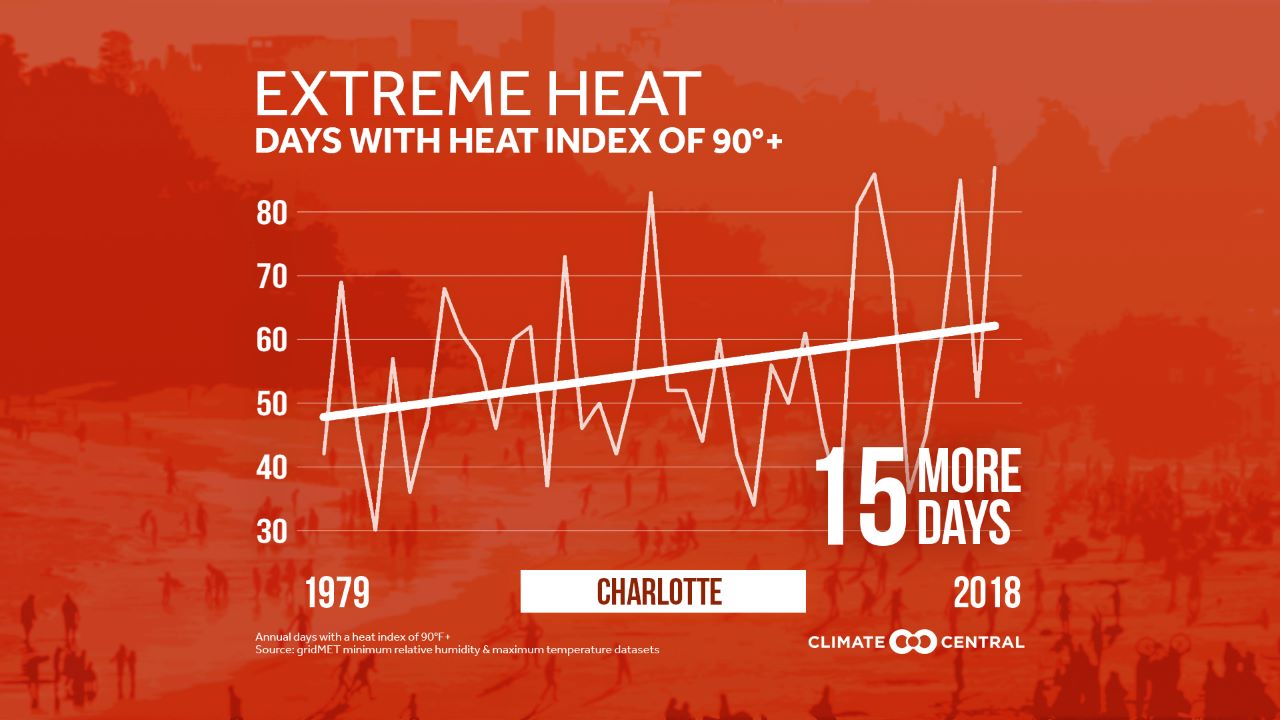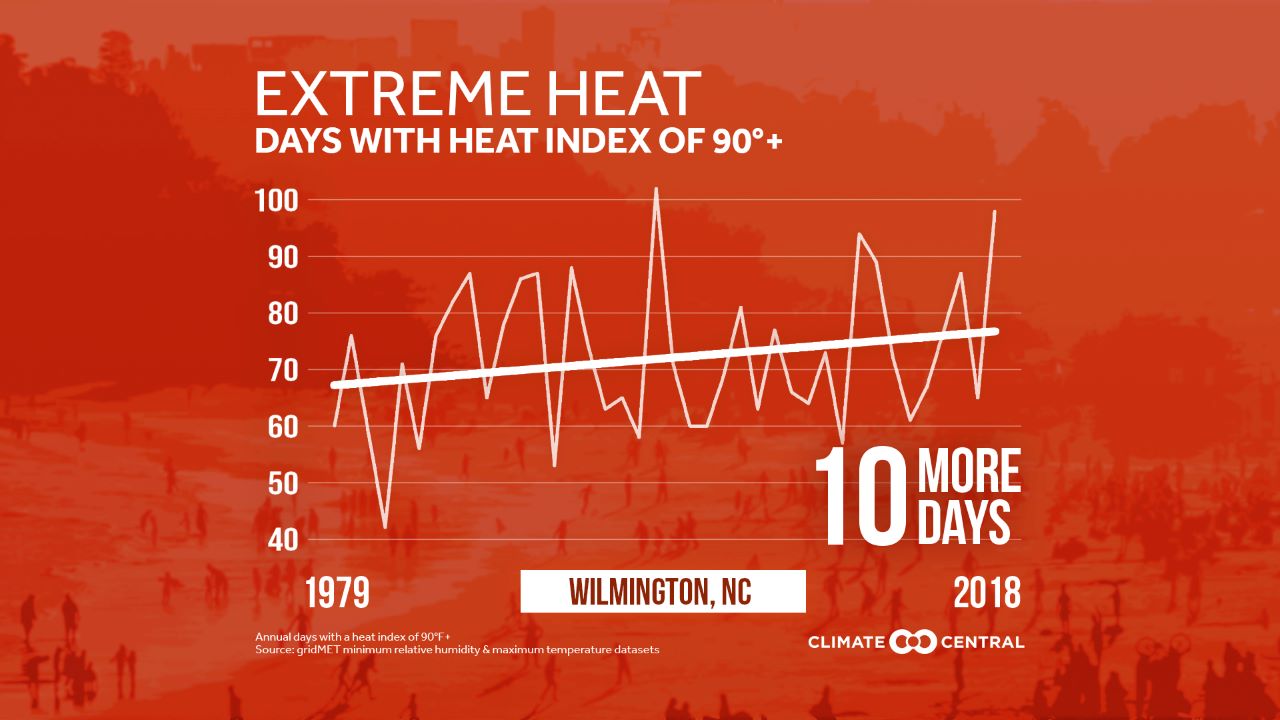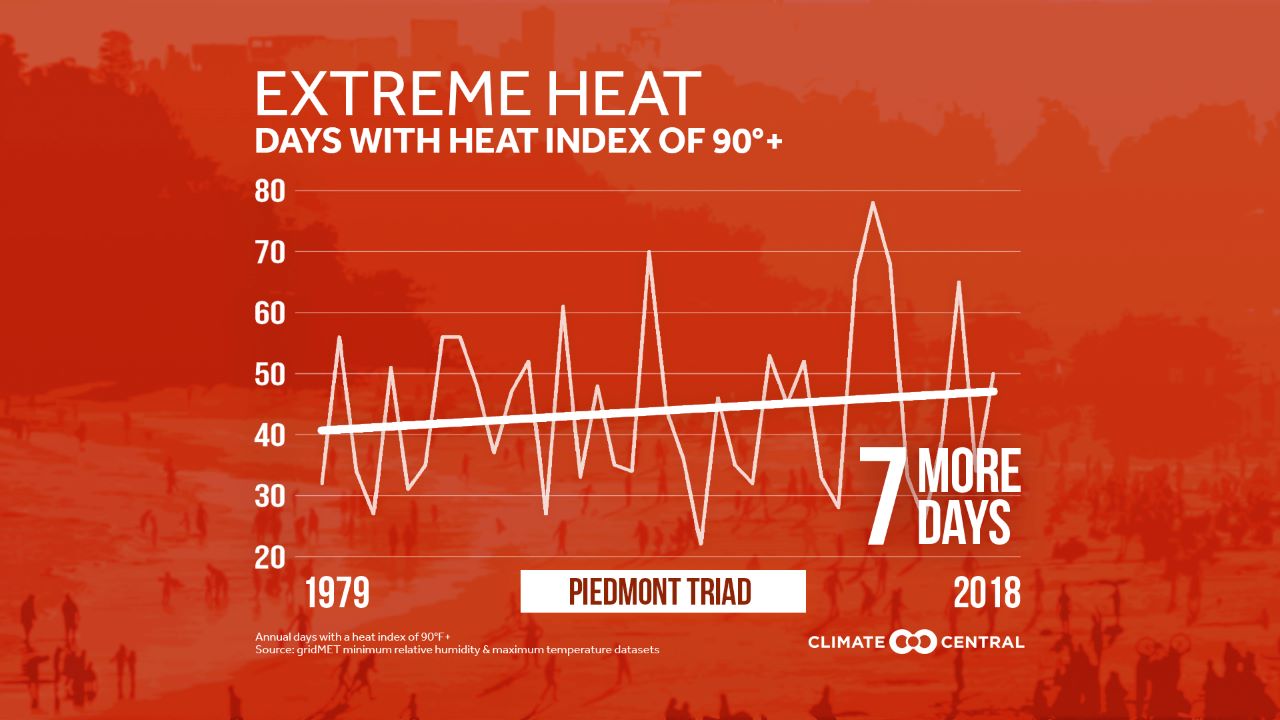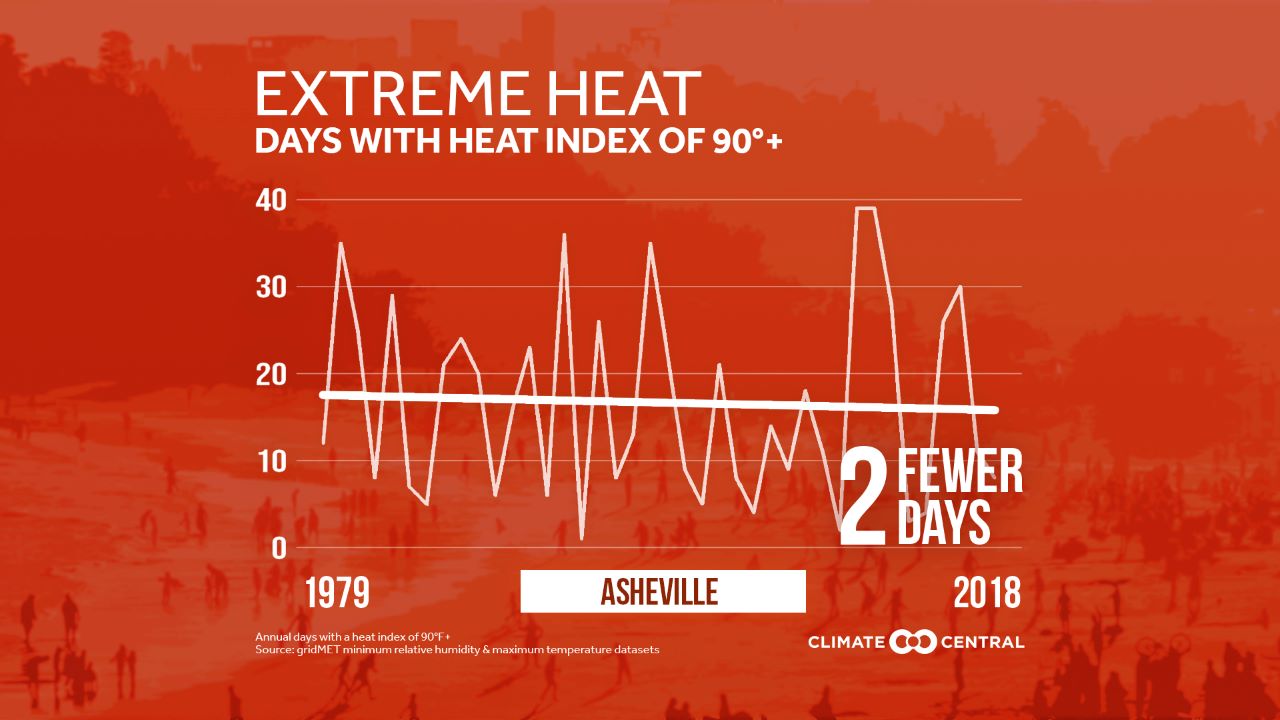NORTH CAROLINA -- It has felt like we are still in the middle of summer this week, but high school football teams across North Carolina will take to the field for their first game of the season Friday. A new report released this week shows outdoor sports like football are becoming more dangerous for athletes due to an increase in the number of days with extreme heat.
- An independent group of scientists at Climate Central studied the increase and temperatures and humidity for 239 cities across the United States since the late 1970s
- They found 83 percent of those locations have seen an increase in the number of days with a heat index of 90 or higher over the last 40 years
- This should be especially concerning to outdoor athletes. The Centers for Disease Control and Prevention has found heat illnesses are the leading cause of death and disability to high school athletes in the United States
An independent group of scientists at Climate Central studied the increase and temperatures and humidity for 239 cities across the United States since the late 1970s. They found 83 percent of those locations have seen an increase in the number of days with a heat index of 90 or higher over the last 40 years.
The greatest increase in days with extreme heat was found in Texas and Louisiana. However, most cities studied in North Carolina have seen an increase in days with a heat index of 90 are higher.






This should be especially concerning to outdoor athletes. The Centers for Disease Control and Prevention has found heat illnesses are the leading cause of death and disability to high school athletes in the United States. During physical exertion on a hot day, our bodies attempt to cool down by sweating. The evaporation of sweat off of our skin is actually a cooling process. During days of high heat and humidity, it takes much longer for our sweat to evaporate. That leads to a higher risk for heat related illnesses like heat exhaustion and even the more dangerous heat stroke.
Extreme caution is recommended to prevent heat exhaustion and heat stroke anytime the heat index, or feels like temperature, reaches between 90 and 103. There is an even higher likelihood for heat related illnesses when the heat index is over 103.
The increase in the number of days with extreme heat is directly related to our warming climate. This year has already seen some of the hottest ever recorded around the globe. There is an overwhelming consensus that our warming climate is caused by increasing levels of greenhouse gas emissions like carbon dioxide.
Another study by the Union of Concerned Scientists has shown the number of days with a heat index over 100 and over 105 will double by the middle of this century compared to a 1971-2000 baseline.
There are things high school athletes can do to prevent illnesses during the extreme heat. The National Athletic Trainers' Association recommends coaches closely monitor athletes that may be more susceptible to the heat and have emergency equipment readily available. Outdoor activity should be limited during the middle when the temperature and heat index is highest. Athletes should not wait until they are thirsty to drink water. Staying hydrated is one of the most important ways to stay safe in very hot conditions.



